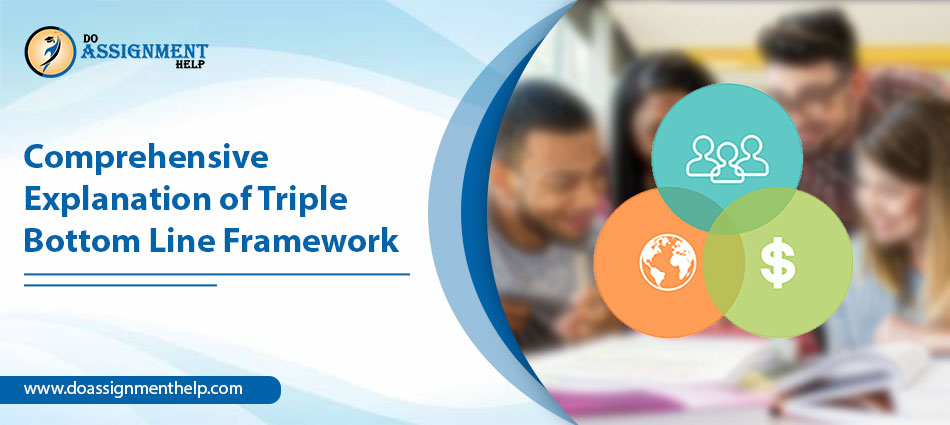Today, the entrepreneurial spirit among people is at an all-time high. Every business wants to bring its vision to fruition and leave a lasting influence. However, a thing that every entrepreneur and business shares is the desire to make a profit. The triple bottom line is a model of business management that gives equal value to the company’s goal of achieving profit and its environmental and social responsibility.
Increasingly, businesses realize the importance of sustainable strategies to address humanity’s challenges and for their success. However, creating such a strategy can seem challenging. In this article, you’ll find in detail about this concept, its benefits, and the challenges it faces.
Table of Contents
A Short History of the Triple Bottom Line
This concept of 3P’s people, planet, and profit originated in 1994. John Elkington, a British sustainability consultant, coined it. He chose to phrase the term to keep environmental and social responsibility at par with economic impact. This term quickly became popular among corporate executives and entrepreneurs.
Before coining this term, Elkington knew corporations would play a huge role in molding the modern era. He also knew that buyers would force corporations to take more ethical actions in line with social morality and sustainability.
Thus, Elkington said that the triple bottom line principle would be a winning case for firms to emphasize societal good that was an outcome of fair and ethical corporate practices.
Surprisingly, this principle came five centuries after Luca Paccioli’s treatise on double-entry bookkeeping came. It arrived when the climate change issue had taken the world’s attention. Thus, it became obvious that successful companies would have to play a role besides the government in minimizing the climate threat.
Breaking down the 3 P’s of Triple Bottom Line
Usually, the bottom line for a business has always been financial statements showing its gains or losses. But this concept also brings the planet and people into the equation. If you want to know what are triple bottom lines 3P’s, keep reading the sections below.
1. People
The concept does not consider people in a company as its employees but as a wider community. People also include the company’s shareholders, customers, and those it contacts at every phase of the supply line. They reflect the level of social responsibility a business shows.
One can easily gauge the impact of a business by asking how a firm benefits society. A company following this concept never pays unfair wages to its employees. They don’t make them for unnecessarily long durations. In addition, such a company also has equitable and fair policies like anti-discriminatory hiring and promotion of diversity.
2. Planet
This part of the triple bottom line is all about leaving a lasting positive impact on Earth. Since the industrial age, corporations have emitted enormous amounts of pollution into the environment because of their operations. The recent climate change phenomenon is, to a large extent, because of these corporations. However, now leaders realize the negative consequences of repeating this mistake.
Every business is accountable for its carbon footprint and reducing it. Change is on the rise as many businesses have become ready and willing to net-zero emissions. Others are committing to regenerating the environment through reforestation. It is in line with Elkington’s proposal that a business’s profitability was supported by its willingness to incorporate sustainable policies.
3. Profit
Profit is a measure of a firm’s success. A company that promotes the use of triple bottom lines identifies its impact on people and Earth. It considers it the same and as important as its profit. For instance, a business will have an adverse economic impact if it employs child labor or makes employees work in unsafe conditions.
The same company will have an excellent economic impact if it promotes good jobs or encourages tourism to a place. Paying taxes responsibly is also quite significant, as it directly influences the creation of societal programs. The concept emphasizes that a company’s profits should not be by exploiting the environment, economy, or people.
Earlier, businesses decided on everything intending to make the most profit. So, they minimized production costs, increased the volume of products sold, and were oblivious to how people were affected. But due to this concept, strategic planning initiatives are to bring positive changes in the environment without minimizing financial performance.
Can You Calculate the Triple Bottom Line?
There is no set method for computing the TBL. Neither is there a standard for the measures that come under the people, planet, and profit categories. It is good as it enables adjusting the general concept to the needs of companies or non-profits, projects or policies, and geographic boundaries.
For example, a firm and local government agency may look at sustainability in the same way, such as to reduce the level of solid waste moving to landfills. Conversely, local mass transit can gauge success as passenger miles. So, the triple bottom line concept can fit in these variations.
That being said, some common economic, environmental, and social measures include the following.
Economic measures
- Personal earnings
- The expense of underemployment
- Establishment churn
- Sizes of establishment
- Job increase
- sector-wise distribution of employment
Environmental measures
- The concentration of sulfur dioxide and nitrogen oxides.
- Chosen priority pollutants
- Abnormal amounts of nutrients
- Electricity usage
- Fossil fuel usage
- Solid waste handling
- Hazardous waste handling
Societal measures
- Unemployment rates
- A forceful female labor participation rate
- Median domestic income
- Relative poverty
- A portion of the population with a post-secondary certificate
- Average time in commute
- Violent activities per capita
- Health-adjusted life span
What Is the Relevance of the Triple Bottom Line Today?
The significance of business responsibility and its greater impact on the world is rising. Why is it so?
Today, through social media channels, business operations, and values are becoming public. It enables consumers to interact directly with brands as if they are people too. Today’s buyers don’t just desire high-end items. They want to leverage their buying power to connect with businesses encouraging greater causes. It allows people to bring a positive impact on the upcoming generations.
These visions and values of a brand also influence the top workforce in a company. Through the use triple bottom lines framework, employees get more self-fulfillment at their jobs. They know that they’ll bring a positive difference in the world by doing what they do at the workplace every day.
In simple words, this concept is hugely important and relevant due to the following:
- It offers a highly sustainable future. This future consists of social and environmental sustainability.
- The concept gives ways to set goals and map and enhance sustainable systems.
- The accounting framework offers ways to produce a profit. These can include capturing new customer segments desiring to reduce their impact on the surroundings.
- It gives a healthier workplace environment that does not focus solely on employees but also on the business’s position in its surrounding social environment.
The triple bottom line framework also has many business benefits. They include:
- Less energy usage and carbon footprint because of the greater environmental focus.
- Better worker retention rates because the workplace environment is more suitable and friendly.
- An increased and improved brand presence and image. It is because a firm following this concept demonstrates that its sole motive is more than profit generation.
- Better productivity and fewer expenses due to attempts for sustainability.
- Higher accountability and clarity of operations. It has a direct result in capturing new investors.
United Nations Sustainable Development Goals for Businesses
Keeping in mind the connection between people, the planet, and profits, the United Nations (U.N) formed Sustainable Development Goals. According to it, megatrends such as population growth and resource scarcity have brought many new markets. At the same time, buyers and investors everywhere are more conscious than before. Both segments of people desire companies to become responsible for the pressure our planet is facing and its threats to its population.
One of the crucial prosperity-oriented aims of the U.N SDG is to provide decent work and economic growth for those in particular communities. Here are some key examples of how corporations can support the prosperity or profit of their stakeholders.
- Take effective measures to eliminate forced labor, slavery, and human trafficking in the modern world by 2025. In addition, it aims to prohibit all kinds of child labor.
- Create and enforce policies to increase sustainable tourism leading to jobs by 2030. It also assists in promoting local culture and products.
Which Companies are Using the Triple Bottom Line Approach
Since the turn of the 21st century, things have been changing for the better. It is not wrong to assert we’re entering an era of business enlightenment. Here are some companies that are using this approach and changing the world.
Microsoft
Microsoft has made many efforts toward sustainability. The company works very innovatively on sustainability. Their corporate social responsibility is an outstanding example of the use of triple bottom lines. Following are some of their plans.
- Usage of technologies such as Artificial Intelligence for the preservation of the environment.
- Making products that use less energy.
- The company wants to invest in smarter mobility.
Amazon
Amazon is the largest retailer globally. They have a huge logistics footprint and, thus, are in a position that makes them responsible toward their stakeholders. Amazon shows its commitment toward the triple bottom line approach through the following:
- Optimizing their delivery fleet
- Minimizing packaging waste
- Minimizing water consumption associated with their services.
Novo Nordisk
Novo Nordisk is a pharma company based in Denmark. It began implementing this approach very early in 2004. It has mentioned its commitment to three aspects in its 2019 annual report. The following three things stand out:
- Maintenance of the focus towards better performance while managing the environmental effects of their services.
- They have sections for consolidated environmental statements and consolidated social statements in their annual report.
- The company dedicatedly works toward zero environmental impact.
Is Triple Bottom Line Easy to Implement?
As much as it’s beneficial, this accounting framework is not so easy to implement. It is why several firms hesitate to use it. The key challenges of using this approach are as follows:
- Inadequate recognition: Brands overlook this concept since it poses a barrier to their financial goals and profit-generating techniques. For instance, eco-friendly practices like recycling waste may lead to more expenses than returns.
- Difficulty in measuring the social and environmental impact: Financial accounting and processes are quantifiable. But quantifying a firm’s social and environmental impact is next to impossible.
- A legal mandate: The legislation of certain nations forces firms to develop social and environmental aims.
- Unauthentic practices: Several companies employ a triple bottom line approach as an advertising tool. It leads to false attempts to alleviate society and the ecology.
- Contradictory elements: The people, planet, and profit aspects of TBL are contradictory. Striking a balance between human, financial, and material resources is not possible.
Frequently Asked Questions
1. How is the triple bottom line different from the financial bottom line?
Business’s effect on society is measured by considering environmental, social, and human capital along with financial capital. TBL evaluates the non-financial performance of a company, while the financial line helps in knowing about the profitability of a business.
2. Who uses TBL?
Three key users of TBL are business entities, government enterprises, and non-profit organizations. The concept promotes sustainable growth. It aims to protect the interests of society and the environment and considers it a significant part of corporate functioning.
3. Why is TBL important?
TBL is so important because it reduces the emphasis on a company’s financial performance. Instead, it puts forward an alternate reporting metric that stimulates businesses to set philanthropic and non-financial goals.
Summing up
The triple bottom line concept goes beyond quantifying a company’s results as per its net income. Broadly, it enables companies to sell products and make the world a better place. If you need assistance understanding it or creating academic work, connect with reliable assignment help online service.
 Santa Clara, CA 95050
Santa Clara, CA 95050 





